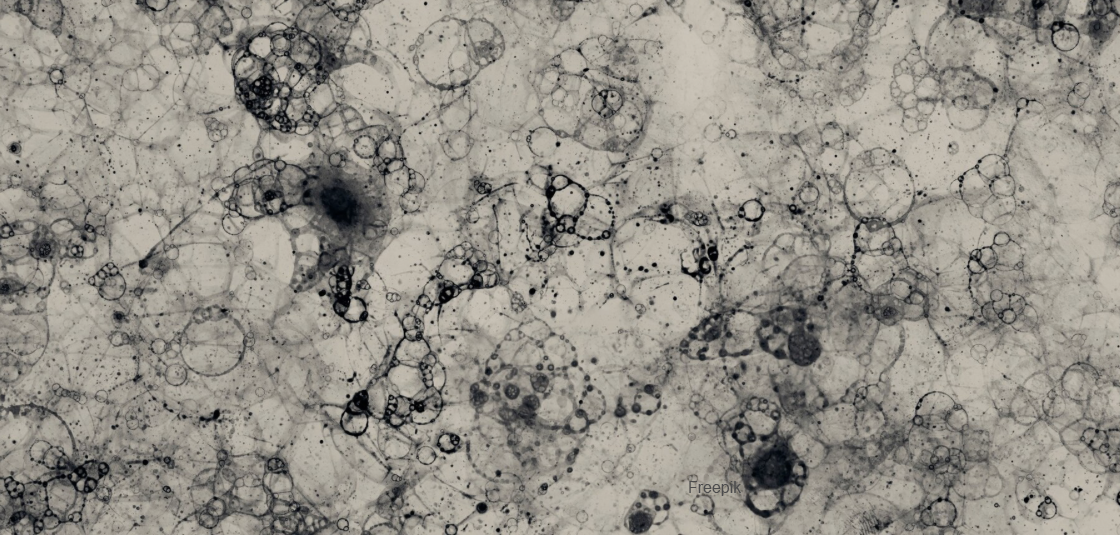
Jenn Alba Coaching
Life, Better.
The Mold We Eat: Hidden Toxins in our food and how to reduce them
What to do about the mold and its byproducts that are hiding in the foods you eat every day
Article Summary
What are the hidden dangers of mold and mycotoxins present in the food supply, and their potential health risks? Learn how mold contamination in foods like coffee, grains, and processed products can lead to digestive, neurological, immune, and hormonal issues. Understand the sources of mold, like how citric acid is produced, and how to minimize exposure through better food choices. Take control of your health by working with a health coach, like Jenn, to create personalized meal plans that reduce toxic load and promote wellness.
Article Outline
-
Introduction
-
Overview of mold and mycotoxins in the food supply.
-
Why awareness of this issue is crucial for health.
-
-
Understanding Mold and Mycotoxins
-
What are mold and mycotoxins?
-
How they contaminate food.
-
-
The Production of Citric Acid
-
Explanation of how citric acid is made using mold.
-
Foods that commonly contain citric acid.
-
-
Mold in Everyday Foods
-
Mold contamination in coffee, grains, and processed foods.
-
Mold levels allowed in the U.S. food supply.
-
-
The Health Impact of Mold and Mycotoxins
-
Digestive problems.
-
Neurological symptoms.
-
Immune suppression.
-
Hormonal imbalances.
-
Chronic fatigue and inflammation.
-
-
How to Reduce Exposure
-
Choosing mold-free or low-mold products.
-
Reading labels for additives like citric acid.
-
Proper food storage and handling.
-
-
The Role of Detox and Clean Eating
-
Benefits of detoxifying the body from mold.
-
Supporting natural detox pathways.
-
-
How Jenn Can Help
-
Jenn’s expertise as a health coach.
-
Customized meal plans and detox strategies.
-
-
Expert References

When you think of mold, you probably picture fuzzy green spots on spoiled bread or cheese. But what if we told you that mold and its byproducts are hiding in foods you consume daily? From coffee and soft drinks to processed snacks and condiments, mold-derived substances and allowable mold contamination are more common than most people realize.
As Dr. Joseph Mercola states in Fat for Fuel, “Our modern diet is riddled with hidden toxins, many of which come from substances we’re unaware of.” By understanding the sources and impacts of mold in food, you can make more informed choices to improve your health and reduce your body’s toxic load.
How Synthetic Citric Acid is Made and Its Hidden Origins
Synthetic citric acid is a ubiquitous food additive found in everything from sodas to salad dressings. While it may sound natural—as it’s associated with citrus fruits—most citric acid on the market is synthetically produced. There isn’t enough citrus in the world to make the citric acid we consume. Adding to your mold toxic load may not be doing you a favor.
The Industrial Process of Citric Acid Production
The majority of citric acid today is produced through a fermentation process using the mold Aspergillus niger. This mold is fed a sugar solution, often derived from GMO corn, to create citric acid as a byproduct. While the end product is purified, trace residues of mold and the chemical processes involved can remain.
WATCH VIDEO ON SYNTHETIC CITRIC ACID
Foods That Contain Citric Acid:
- Soft drinks and fruit juices
- Candy and ice cream
- Baked goods
- Packaged sauces and condiments
- Canned fruits and vegetables
- Many, many more... Please check your food labels
Dr. Mark Hyman, author of Food: What the Heck Should I Eat?, warns, “The chemicals and additives in processed foods disrupt our body’s natural detoxification processes.” While citric acid may seem harmless, its widespread use contributes to cumulative exposure that may affect sensitive individuals. Sensitivity may compound over time due to increased exposure.

Mold Levels Allowed in Foods
Even when mold is not an intentional ingredient, trace amounts are allowed in many foods under U.S. regulations. The FDA sets specific limits for mold contamination to ensure safety, but these limits may surprise you. Compared to other countries around the world, see how the United States ranks in their mold limits. This might make you uncomfortable.
Mold in Coffee:
Coffee beans are particularly susceptible to mold contamination during growth, storage, and processing. Mycotoxins, toxic compounds produced by mold, are often found in coffee. While regulations limit allowable levels, even small amounts of mycotoxins can contribute to your toxic load over time.
Mold in Other Foods:
- Peanuts: A common source of aflatoxins, a dangerous mycotoxin. *Sorry to the peanut butter lovers!
- Grains: Corn, wheat, and oats can harbor mold during storage.
- Cheese: Mold is intentionally used in some varieties but can also occur unintentionally in others. If your toxic load is high, you may have trouble eating different aged cheeses.
- Dried fruits: Often contain mold due to improper drying techniques. Make sure it's done right.
According to Dr. David Asprey, founder of Bulletproof, “Even low levels of mycotoxins can have cumulative effects, contributing to fatigue, brain fog, and immune dysfunction.”

The Health Impact of Mold and Mycotoxins
Consuming foods contaminated with mold or mycotoxins can lead to a range of health issues, many of which may go unnoticed or be misattributed to other conditions. Here's an expanded look at how mold and mycotoxins affect the body:
1. Digestive Problems
Mold-contaminated foods can irritate the gastrointestinal tract, leading to symptoms like nausea, vomiting, bloating, and diarrhea. Chronic exposure to mycotoxins has been linked to increased gut permeability, often referred to as “leaky gut syndrome,” which can exacerbate food sensitivities and autoimmune conditions.
According to Dr. Robert Morse, author of The Detox Miracle Sourcebook, “The gut is the center of health, and any compromise to its integrity can cascade into systemic issues.”
2. Neurological Symptoms
Mycotoxins have been shown to cross the blood-brain barrier, leading to neurological effects. Symptoms can include brain fog, memory issues, difficulty concentrating, and mood disturbances such as anxiety and depression. Chronic exposure may even contribute to neurodegenerative diseases over time.
A study published in Toxins journal highlights that mycotoxins like ochratoxin A and aflatoxins can interfere with neurotransmitter pathways, disrupting brain function and emotional stability.
3. Immune Suppression
Exposure to mold and mycotoxins can weaken the immune system, making the body more susceptible to infections and chronic illnesses. Mycotoxins suppress the production of key immune cells like T-cells, which are vital for fighting pathogens. This suppression can lead to recurrent respiratory infections, sinusitis, and even prolonged recovery from common illnesses.
Dr. Neil Nathan, author of Toxic, explains, “Mycotoxins are some of the most immunosuppressive agents we encounter in modern environments.”
4. Hormonal Imbalances
Mycotoxins have been found to disrupt endocrine function, affecting hormone regulation and metabolism. This can result in fatigue, weight gain, and disruptions in menstrual cycles for women. Mycotoxins like zearalenone mimic estrogen in the body, leading to hormonal imbalances that can affect both men and women. These disruptions can further impair energy levels and metabolism, creating a cycle of fatigue and weight fluctuations.
5. Respiratory Issues
Inhalation of mold spores, often accompanying ingestion of contaminated foods, can exacerbate respiratory conditions such as asthma, bronchitis, and chronic sinus infections. Studies have shown that mycotoxins can cause inflammation in the respiratory tract, leading to difficulty breathing and persistent coughing.
6. Chronic Fatigue and Systemic Inflammation
Exposure to mycotoxins often results in systemic inflammation, which can manifest as chronic fatigue, joint pain, and muscle aches. Persistent inflammation affects the body’s ability to repair itself and can contribute to long-term health challenges, including cardiovascular and autoimmune diseases.
Dr. Jill Carnahan, a functional medicine expert, states, “Mycotoxin exposure is a significant contributor to chronic inflammation and must be addressed for true healing to occur.”
Think mold might be contributing to your health concerns? Get your Toxin Eposure Assessment
Expert Insight: The Importance of Detox
Dr. Robert Morse underscores the significance of detoxification, stating, “Your body’s ability to heal and thrive is directly linked to the quality of the fuel you provide.” He recommends focusing on natural, whole foods, proper hydration, and reducing exposure to environmental toxins to support the body’s detoxification pathways. Regular cleansing can help mitigate the cumulative effects of mycotoxins and restore balance to the body.
By understanding the pervasive nature of mold and mycotoxins and taking proactive steps, you can protect your health and reduce your body’s toxic load.
Reducing Your Exposure to Mold in Food
Taking steps to reduce mold exposure in your diet is crucial for lowering your toxic load and improving your health. Here’s how you can start:
1. Choose Organic and Fresh Foods
- Organic foods are less likely to be contaminated with mold or synthetic additives.
- Prioritize fresh produce over processed and packaged foods.
2. Store Foods Properly
- Keep grains, nuts, and dried fruits in airtight (glass if possible) containers to prevent mold growth.
- Refrigerate perishable items promptly.
3. Invest in High-Quality Coffee
- Choose brands that test for mycotoxins and source beans from reputable suppliers.
- Opt for single-origin coffee, which has a lower risk of contamination.
4. Read Labels Carefully PLEASE PLEASE PLEASE
- Avoid products with citric acid or other mold-derived additives when possible.
- Look for natural preservatives like vinegar or rosemary extract.
5. Support Your Detox Pathways
- Increase your intake of detoxifying foods like garlic, cilantro, and cruciferous vegetables.
- Stay hydrated to support kidney and liver function.
Awareness and Better Food Choices for a Healthier Life
Understanding what’s in your food is the first step toward better health. By minimizing your exposure to mold and mycotoxins, you can:
- Improve your digestion and nutrient absorption.
- Enhance your energy levels and mental clarity.
- Strengthen your immune system and resilience to illness.
As Dr. Alejandro Junger notes in Clean, “When you clean up your diet, you clear the way for your body to heal itself.”

How Jenn Can Help You Take Action
Navigating the complexities of food labels, sourcing, and meal planning can feel overwhelming. That’s where Jenn, your dedicated health coach, comes in. With Jenn’s guidance, you can:
- Identify problem foods that may be contributing to your toxic load.
- Create personalized meal plans that support detoxification and optimal health.
- Receive ongoing support to stay on track with your health goals.
Jenn: “Every small change in your diet can lead to big changes in your health and well-being.”
Ready to Take Control of Your Health?
You don’t have to tackle this journey alone. With Jenn’s expertise and personalized approach, you can transform your relationship with food and unlock your healthiest self.
Ready? Contact Jenn.
Article References
-
Legal Loophole for US Foods
Link to NYU Article -
Dr. Joseph Mercola - Fat or Fuel
Dr. Mercola's Book Info -
YouTube Video: Citric Acid & Toxic Black Mold — What to Know
VIDEO LINK -
Dr. Mark Hyman - Food: What the Heck Should I Eat?
Dr. Mark Hyman - The UltraMind Solution
Dr. Mark Hyman’s Website -
Dr. David Asprey - Bulletproof
Dr. Asprey's Official Site -
Robert Morse - The Detox Miracle Sourcebook
Dr. Robert Morse’s Official Site -
Dr. Niel Nathan - Toxic: Heal Your Body from Mold Toxicity
Dr. Nathan's Official Site -
Dr. Jill Carnahan - Toxic Mold: Understanding and Treating Mold Toxicity
Dr. Jill Carnahan’s Website -
Dr. Alejandro Junger - Clean
Dr. Junger's Site
Get Your Personal Toxin Exposure Assessment
Welcome to your personalized detox assessment! This quiz will help you identify areas in your environment where you may be exposed to toxins. By the end, you’ll get actionable tips to start your detox journey and reduce your body’s toxic load.
* Disclaimer: Always consult with a medical professional before starting any health program. Jenn is a certified health coach.
